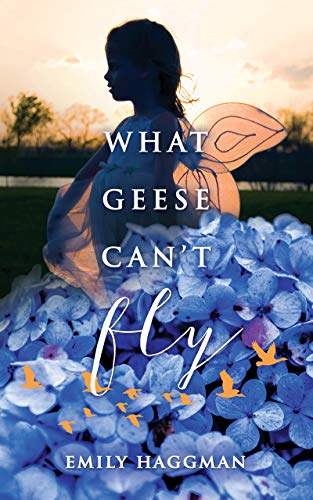Turning a screenplay into a novel can be useful in terms of acquiring an audience. After all, developing a following for a tale transformed into a book has sometimes been known to lead to having a story be rescued from the pit of obscurity (aka the Hollywood Slush Pile). Though before any of this can happen, efforts must be undertaken to transform script material into correctly-structured literature, which entails flushing out film beats and dialog into the form of an actual novel. In the case of WHAT GEESE CAN’T FLY? by Emily Haggman, this effort has not yet been done.
The story classified as ‘literary fiction’ remains in the form of a film script. What’s interesting about the tale is its attempt to capture the inspired-by-real-life flavor of Grace Vieira’s family who have emigrated from a Portuguese archipelago, and their subsequent struggles adjusting to life in Cambridge, Massachusetts–a potentially powerful topic in America’s ‘melting pot’ culture, especially today. Additionally, the author’s intent to encourage women to not accept being or staying victims and instead empower them to make smarter/healthier short and longer-term choices no matter what Life throws at them is noteworthy. However these positive aspects are overshadowed by the fact that the story itself is not yet fully developed in either plot or characterization, along with falling prey at times to various other flaws, such as a confusing overabundance of jumps in time. Even a narrative related in the skeletal shape of a film script must be rich in escalating dramatic tension and fully fleshed out characters who are able to evoke a range of audience emotion, and that is only more true when attempting to do justice to a tale intended for not studio script readers but the readers of novels.
Thus far, this storyline of WHAT GEESE CAN’T FLY? and its climax are too predictable without enough plot twists, turns, or touching surprises along the way: Grace’s mother is old-school religious, Grace’s older sister is dragged down by an abusive man, and her brother turns to a life of crime, while she becomes the one family member who studies hard, goes to college, and may ‘get away’ from the mean streets of Cambridge. While this trajectory of events may all be true and the way things have gone and can still go for immigrants in a new country, the details from these people’s lives must be rendered in new and fresher ways to more authentically lift off the page. To inspire readers of literature to deeply care, all characters need to feel unique rather than stereotypical.
It may be difficult for Emily Haggman’s potentially interesting, multicultural immigrant story WHAT GEESE CAN’T FLY? to obtain a fan base in the world of literary fiction since, at the moment, it reads more like a 159-page movie script than it does a book.
~C.S. Holmes for IndieReader

